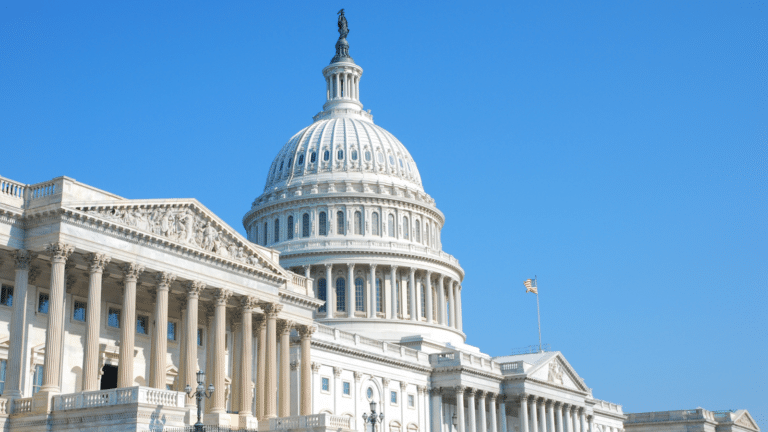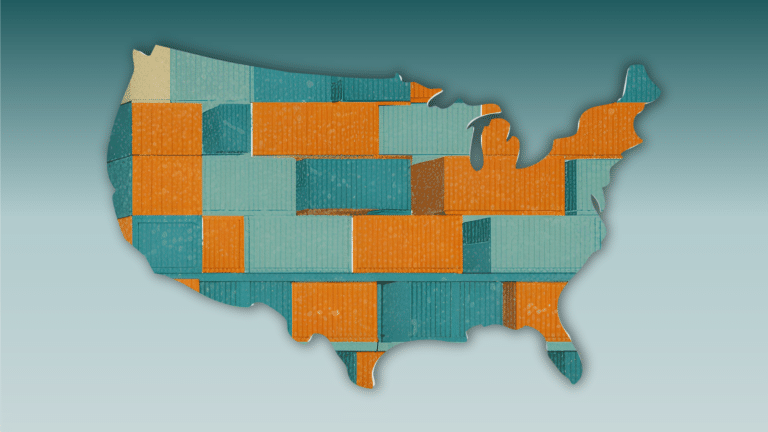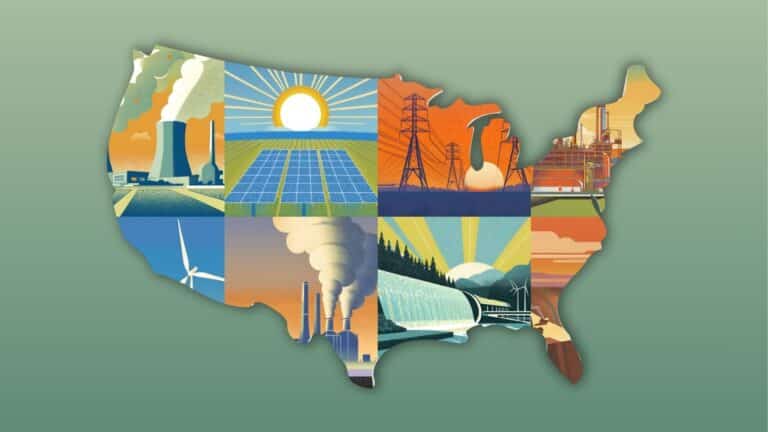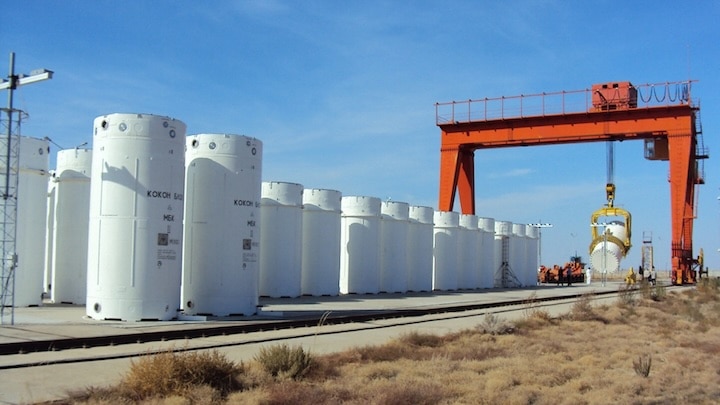Russia’s invasion of Ukraine continues with no endpoint in sight, leading to ramped up sanctions and bans — some directed squarely at the energy trade. Given the unknown nature of how this crisis will unfold, it is useful to consider a variety of potential future scenarios, including what restricted energy flows would mean for countries dependent on Russian gas and other fossil fuels, as well as for Russia itself.
In this piece, Anne-Sophie Corbeau, a global research scholar with the Center on Global Energy Policy, answers questions about the current Russian gas flows to Europe and what scenarios can be envisaged regarding their future evolution, including a potential disruption.
What are the potential scenarios of a reduction of Russian gas flows to Europe?
There are two potential scenarios: one in which Russia reduces abruptly its exports to Europe (either partially or totally) and the other in which the European Union puts in place different measures to progressively reduce its imports of Russian gas.
A total disruption of Russian gas flows to Europe would reduce the associated income to Russia.[1] A partial reduction of supplies, however, could further increase European gas prices and possibly bring higher revenues to Russia. Russia could opt for that option to maximize pressure on Europe. Russian Deputy Prime Minister Alexander Novak said his country could stop flows from the gas pipeline Nord Stream 1 in retaliation for the ban of Nord Stream 2 and potential bans on Russian oil supplies.[2] Another possible area of disruption—albeit smaller—could be gas flows through Ukraine if the network cannot be safely operated.
Meanwhile, the International Energy Agency and the European Commission are actively looking at reducing natural gas imports from Russia in the short term.[3] A 10-point plan by the IEA would reduce the EU’s Russian gas imports by more than 50 bcm within one year, while the European Commission’s plan would reduce Russian gas imports by twice that within the same timeframe.[4] This abatement could be achieved through a series of short-term measures aimed at increasing flows from alternative suppliers while reducing gas demand.
A more extreme scenario could arise if further sanctions are imposed on Russia’s fossil fuels exports. Such a move could have far-reaching consequences on oil and coal markets globally; however, such action from the European Union appears unlikely given how dependent some countries are on both natural gas and coal, and how that would limit their ability to use coal to replace natural gas in the power sector.
What is the significance of Russia’s threat to restrict gas flows through the Nord Stream 1 pipeline?
Russia sends gas to Europe, including Turkey, through different pipelines, the largest being (from North to South):[5]
- Vyborg-Imatra to Finland (6 billion cubic meters [bcm]/year [y])
- Nord Stream 1 to Germany (55 bcm/y)
- Yamal/EuRoPol crossing Belarus to Poland (33 bcm/y)
- Brotherhood, Soyuz, and Progress pipelines crossing Ukraine with different branches to Slovakia, Hungary, Poland, and Romania (146 bcm/y,[6] with 40 bcm/y booked by Gazprom until 2024)
- TurkStream to Turkey (31.5 bcm/y)
- Blue Stream to Turkey (16 bcm/y)
Russia’s capacity to deliver natural gas to Europe is in theory much larger than its current exports, but in practice the use of pipelines crossing Ukraine has been progressively reduced to around 40 bcm/y, as Russia has sought to diversify away from Ukraine.[7]
The Nord Stream 1 pipeline is usually used at capacity; it transported about 55 bcm in 2021.[8] The possible reduction of flows through that pipeline, as mentioned by Novak, would be significant and affect primarily Northwest Europe. If Russia uses Ukraine’s booked capacity of 40 bcm/y, that reduces Russia’s gas pipeline capacity to Europe to about 130 bcm (including links to the Baltics), but to only 80 bcm to Northern Europe. In practice, some of that capacity (through Poland and Slovakia) is already underutilized.
Has Russia already been restricting gas supplies to Europe?
Gazprom has indicated many times that it has fulfilled its long-term contractual obligations. But in practice, since summer 2021, the company has been delivering less than had been expected by market players to the European gas market. Indeed, Gazprom stopped selling additional quantities of spot gas onto the Electronic Sales Platform (ESP) on October 13, 2021. The ESP (through which sales began in September 2018) was intended for selling surplus gas to European consumers in addition to supplies under existing medium- and long-term contracts. In 2020, about 27 bcm of gas were sold on the site. Much of the gas sold on the ESP before the auctions were halted was for 2022 and 2023 delivery.[9] The suspension has been a way for Gazprom to reduce gas deliveries to Europe and help maintain high prices.
Additionally, since late 2021, Russian flows through the Yamal/EuRoPol pipeline to Poland at Kondratki and through Ukraine to Slovakia at Uzhgorod have been much lower than normal (32 million cubic meters per day (mcm/d) in January 2022 and 54 mcm/d in February 2022 against 141 mcm/d on average in 2021 for both routes). These flows have paradoxically increased since the start of the invasion to around 110 mcm/d. This does not seem to be driven by Gazprom but rather by the nominations of European buyers.
Data from the ENTSOG’s transparency platform indicate that not only have physical gas flows been low but nominations have also dropped. This could be explained by the fact that some buyers of Russian gas have been optimizing their portfolio by buying gas at the spot market rather than at higher rates under long-term contracts.[10] Day-ahead prices in January 2022 were at a discount to the front-month index, which was reflecting the high levels observed for spot prices in December 2021. It is therefore possible that some gas buyers preferred to reduce their nomination of Russian gas if they were using front-month indexation. After the invasion began, day-ahead prices have increased sharply and are now much higher than the front-month index.
Notes
[1] A big unknown is whether Turkey would be disrupted as well. Turkey imported about 27 bcm of Russian gas in 2021 and imports pipeline gas through two direct pipelines. The TurkStream pipeline also supplies natural gas to Southeast Europe.
[5] The capacities listed are annual; technical daily capacities reported by ENTSOG can be slightly higher. Additionally, there are two small direct gas pipelines to Estonia and Latvia, and one small pipeline to Lithuania and Kaliningrad (crossing Belarus). The TransBalkan pipeline (26 bcm/y) crossing Ukraine to supply Romania, Bulgaria, Greece and Turkey has been replaced by gas supplies through the TurkStream pipeline since early 2020.
[10] During an Investor Days presentation in 2020, Gazprom indicated that 56.1 percent of its export portfolio was linked to the day-ahead and month-ahead (also called front-month) contracts, 30.9 percent was linked to forwards (quarter, season, and year), and 13 percent was indexed to oil. See, Gazprom, “Gazprom Investor Day – Stress tested, now back on track,” April 29, 2021, https://www.gazprom.com/f/posts/23/378358/invest-day-2021-presentation.pdf.






